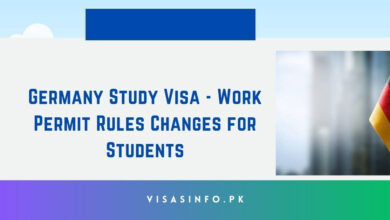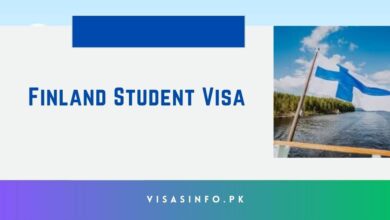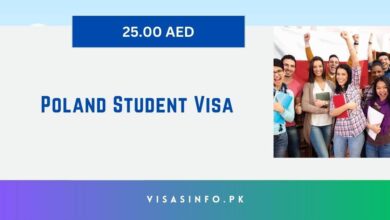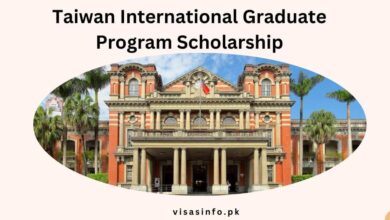USA Student Visa 2024 – Application Process
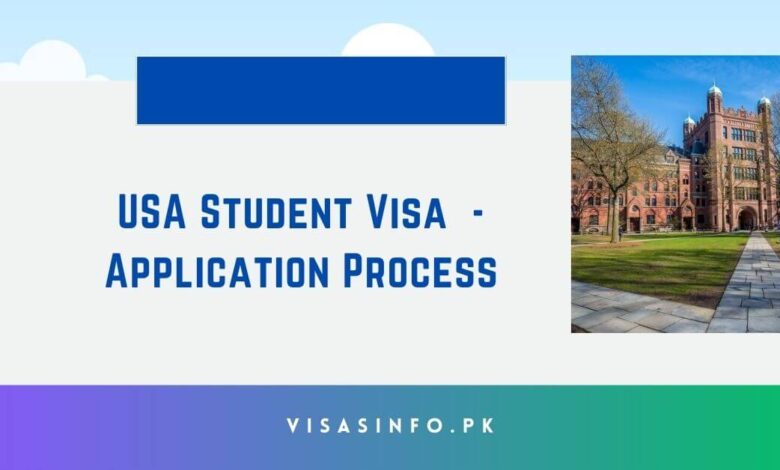
The prospect of studying in the United States can be both exhilarating and challenging for a foreign student. Even though the United States has a top-tier educational system and a plethora of opportunities for studying abroad, obtaining a student visa can be difficult.
It is easy to feel overwhelmed by the numerous deadlines and documentation that must be completed. However, fear not; this guide will provide you with a comprehensive, step-by-step explanation of the entire process. We have everything you need to prepare for your visa interview, from comprehending the numerous categories of student visas available to students to obtaining the requisite documents.
This guide will help you manage the student visa application process with ease and confidence, regardless of whether you aspire to pursue graduate or undergraduate studies in the United States.
USA Student Visa
The Student Visa USA is a legitimate passport endorsement for students who are pursuing their education in the United States. It is imperative to possess it when traveling to the United States. There are three distinct categories of US student visas: F, J, and M, which are contingent upon the educational objectives of the individual. To obtain a student visa for the United States, you must submit the necessary documentation to the US Embassy or Consulate in your country. In the subsequent section, we will delve further into this matter.
Types of USA Student Visas
Before commencing the application procedure, you must be cognizant of the numerous types of student visas that are available to Nigerian students. In the United States, there are three primary categories of student visas. To qualify for any of these three opportunities, you must have been admitted to the university to which you submitted your application.
Student visas are classified into three principal categories:
- F-1 student visa
- M-1 student visa
- J-1 student visa
F-1 Student Visa
The F-1 visa is intended for students who intend to enroll in a private secondary school, a US college or university, or an English language program. Students who intend to enroll in academic or language courses in the United States should apply for this visa. The F-1 visa is also appropriate for students who plan to enroll in a course or program that runs for fewer than eighteen hours per week.
Furthermore, the F-1 Student Visa allows for the transfer of studies and the attendance of multiple institutions or universities upon notification to the United States Citizenship and Immigration Services (USCIS). If they wish to pursue their education concurrently with their employment, F-1 visa holders are permitted to engage in part-time employment on campus.
Additionally, F1 students are eligible to participate in OPT (Optional Practical Training) for a complete year after the completion of their coursework. OPT provides students with the opportunity to acquire practical experience that is pertinent to their academic program. To maintain one’s residence and employment in the United States for an additional year, it is necessary to obtain a work visa. If you do not register for OPT or are not employed, you are permitted to remain and work in the United States for six months with an F1 Student Visa.
M-1 Student Visa
The M-1 visa is intended for international students who are interested in enrolling in non-academic programs, such as technical or vocational schools, aviation schools, beauty schools, or culinary arts. This visa is available to students who intend to complete a non-academic course or program.
In contrast to students on an F-1 visa, those on an M-1 visa are prohibited from working on or off campus. The M student visa allows students to apply for a driver’s license, establish a bank account, use healthcare facilities, and even work in the United States, subject to specific limitations.
J Exchange Student Visa
The J Exchange Student Visa was established to facilitate the participation of international students and working professionals in exchange programs in the United States. It allows them to continue their education in the United States at either their native institution or a partner university.
Check Also: Student Visa Priority Processing for Australia
Benefits of a USA Student Visa
- Access to World-Class Education: The United States is home to a diverse array of programs and degrees, including many of the world’s most outstanding universities and colleges.
- Employment Opportunities: F-1 visa holders are permitted to work on-campus for a maximum of 20 hours per week during the academic term and full-time during vacations. Furthermore, they may be eligible for Optional Practical Training (OPT) and Curricular Practical Training (CPT) to acquire work experience that is pertinent to their field of study.
- Pathway to Employment: Upon completion of their studies, students are eligible to apply for OPT, which enables them to work in the United States for a maximum of 12 months (or 24 months for STEM graduates). This experience has the potential to be invaluable in the development of a vocation.
- Cultural Exchange: Studying in the United States offers a distinctive chance to become fully immersed in American culture, engage with individuals from a variety of origins, and broaden your global perspective.
- Dependents: While pursuing their studies in the United States, F-1 visa holders are permitted to bring their spouses and children (under F-2 visas) to the country. Although F-2 spouses are prohibited from working, they are permitted to participate in volunteer work and, in certain instances, pursue part-time education.
- High Quality of Life: The United States provides a secure environment, modern amenities, and healthcare, all contributing to a positive student experience.
- Research and Innovation: Numerous institutions in the United States prioritize research and innovation, offering students the chance to engage in innovative initiatives and enhance their abilities in cutting-edge disciplines.
- Networking Opportunities: Students have the opportunity to establish a professional network that can be advantageous for future career opportunities in the United States and abroad by participating in a university community in the United States.
- Permanent Residency: Numerous students transition to work visas, such as the H-1B, after concluding their education and employment in the United States. These visas can serve as a route to permanent residency (Green Card).
Student Visa Cost
The cost of a student visa in the United States varies depending on the type of visa you file for. An F1 student visa costs $510, an M1 visa costs $160, and a J1 visa costs $160. To facilitate your comprehension, the following table provides a concise summary of visa-related expenses:
- The cost of an F1 student visa is $510.
- $160 for a J1 visa
- $160 for an M1 visa
USA Visa Rules for International Students
To study in the United States, international students are required to adhere to specific regulations established by the US government. The following are the guidelines:
- Primarily, students who desire to pursue their education in the United States may apply for either an immigrant visa, which allows them to remain permanently, or a non-immigrant visa, which allows them to remain temporarily.
- Additionally, students who intend to commence their higher education in the United States (VWP) are not permitted to enter the country on a visitor visa or through the Visa Waiver Program.
- In addition, international applicants seeking admission to US universities should submit their applications to institutions that have been approved by the Student and Exchange Visitor Program (SEVP).
- Furthermore, it is recommended that students delay the commencement of the visa application process until the admissions applications of institutions recognized by the Student and Exchange Visitor Program have been verified.
- Additionally, it is recommended that students postpone their visa applications until their admissions have been confirmed by institutions designated by the Student and Exchange Visitor Program (SEVP).
Requirements for a USA Student Visa
To register for a student visa, it is necessary to meet the criteria established by the United States government.
- Initially, you must be admitted to a US university that has been authorized by the Student and Exchange Visitor Program (SEVP) to admit non-immigrant students. In addition, you must be enrolled full-time in an academic or language program that has been approved by SEVP, as well as a vocational or technical program.
- Additionally, it is necessary to prove that you possess the financial means to cover your living expenses, tuition, and any other expenses that may arise during your stay in the country. Furthermore, you must demonstrate that you have significant connections to Nigeria and intend to return there upon the completion of your studies in the United States.
- Finally, you must be in excellent physical and mental health and have no history of criminal convictions or immigration violations. If you satisfy all of these prerequisites, you are eligible to apply for a student visa.
Steps to Apply for a USA Student Visa
The application process for a student visa can be challenging and time-consuming; however, it can be expedited and executed more efficiently by adhering to these guidelines.
1. Fill out the Online Nonimmigrant Visa Application Form (DS-160)
The initial step in the application process is to complete the Online Nonimmigrant Visa Application Form (DS-160). This form requests basic information about you, such as your name, birthdate, and passport information. Additionally, you will be required to submit a current passport-style photograph of yourself.
2. Pay the Visa Application Fee
The non-refundable visa application fee must be paid after the DS-160 form has been completed. The cost must be covered through online credit card payments or other approved payment options.
3. Set Up Your Interview for a Visa
Your visa interview can be scheduled at the US embassy or consulate in your native country after you have paid the application fee. To schedule your interview, you will require your passport details, payment receipt, and DS-160 confirmation documentation.
4. Collect the Necessary Records
Before your interview, ensure that you have all the necessary documentation, including your passport, the SEVIS I-20 or DS-2019 form, your financial records, your academic transcripts, and any additional supporting documents that the US embassy or consulate may request.
5. Attend Your Visa Interview
The final stage is to attend your visa interview at the US embassy or consulate. During the interview, you will be asked about your financial situation, your intended studies in the United States, your background, and your intentions to return to your home nation after completing your studies. If your visa application is approved, you will receive instructions on how to obtain your passport and visa.
Tips for a Successful USA Student Visa Interview
It is essential to adequately prepare for the visa interview, which is a critical component of the student visa application process. Here are a few suggestions to assist you in preparing for your visa interview.
- The most important thing is to arrive at the interview early and to dress professionally.
- Additionally, respond with transparency and forthrightness.
- Additionally, compose an account of your objectives for your academic and professional pursuits, as well as their relevance to your intended study abroad experience in the United States.
- Additionally, ensure that you have the necessary documentation and are prepared to address any inquiries.
- Above all, demonstrate self-assurance and demonstrate a strong connection to your country of origin, indicating that you intend to return there upon the conclusion of your studies.
Common Mistakes to Avoid in the USA Student Visa Process
The application process for a student visa is frequently perceived as complex, and it is feasible to commit errors that could lead to the rejection or postponement of your application. Several common errors should be avoided:
- To the greatest extent, applying with inaccurate or incomplete information.
- Additionally, the prerequisites for the visa you are requesting are not met.
- Furthermore, there is insufficient funding to cover living expenses and education in the United States.
- Additionally, there is a lack of a concrete plan to return to Nigeria after concluding your education or strong ties to the country.
- Finally, failing to allocate sufficient time to prepare for your visa interview.
Post-Visa Approval Checklist for International Students
Upon the approval of your visa, numerous tasks must be completed in preparation for your travel to the United States. A compilation of post-visa approval checklists for pupils;
- Schedule your journey and reserve your airfare.
- Additionally, obtain health insurance for the duration of your visit to the United States.
- Furthermore, submit a housing application or arrange for impermanent accommodations.
- Additionally, it is recommended that you familiarize yourself with American customs and culture.
- Finally, ensure that you are adequately equipped to satisfy your academic and language requirements.
Conclusion
Although the process of applying for a student visa to study in the United States can be difficult, it can be completed with ease and confidence if you are prepared and possess the necessary knowledge. By thoroughly preparing for your visa interview, fulfilling the requirements, and being aware of the various types of student visas that are available, you can increase your chances of success.
It is important to avoid common errors, manage your money responsibly, and utilize the resources available to you. Studying in the United States is feasible with diligence and commitment.
Frequently Asked Questions:
-
How long does a US student visa take to process?
The Embassy typically processes visas within 21 workdays of receiving the application. You should allow an additional 2-3 workdays for the return of your passport.
-
Is obtaining a US student visa simple?
How do I get an F1 visa? The process is simple enough, but it will take some time. American visa issues usually take a long time to sort out, even at the best of times, but for an F1 Student Visa USA, there are other considerations to take into account. The first step is to apply for an American university.
-
How much is the USA student visa fee?
The US student visa application fee is $160, but combined with the SEVIS application fee, the total process may cost up to $510. For more detailed information, please visit the Fees for Visa Services website.
